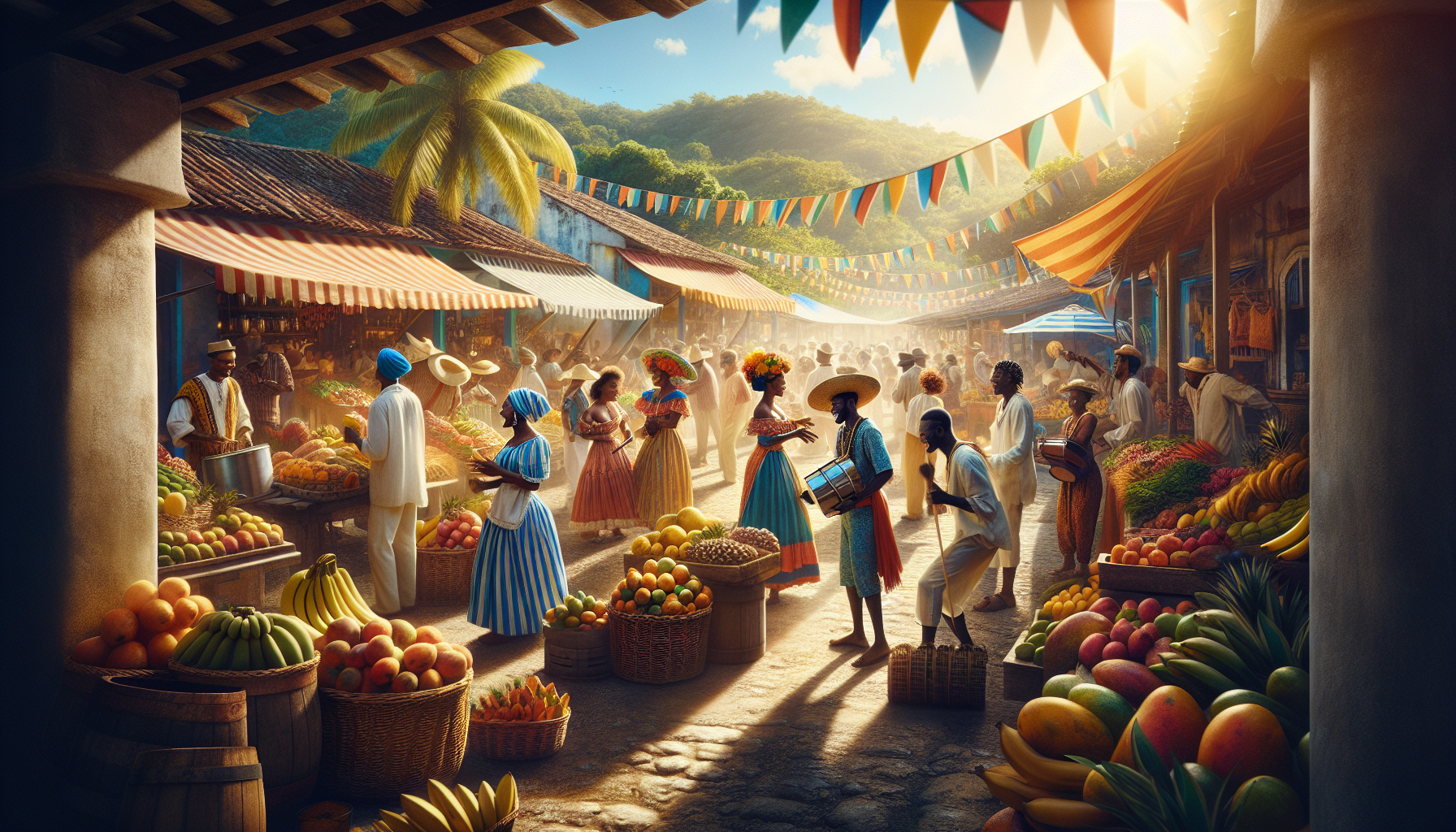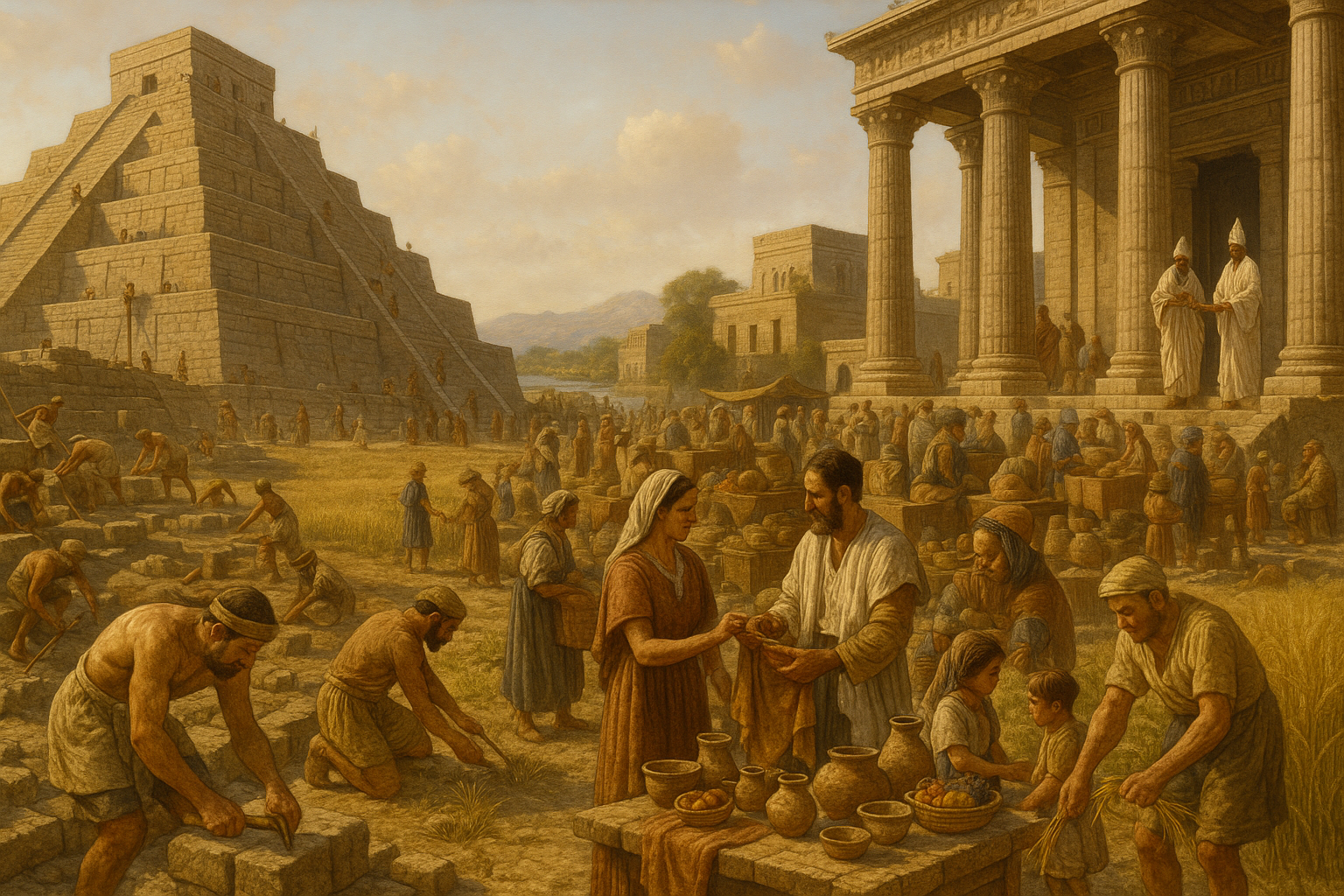Exploring the vibrant essence of the Caribbean, “Caribbean Harvest: A Celebration of Culture, Food, and Tradition” delves into the heart of what makes this region a true mosaic of flavors and customs. The Caribbean is not just a destination; it’s a journey through a rich tapestry of history and community spirit. This exploration unveils how the islands’ bountiful harvests are more than mere sustenance; they are a cornerstone of cultural identity and communal celebration.
Dive deep into the unique culinary traditions that define the Caribbean’s diverse cultures. From the tantalizing spices of jerk seasoning to the refreshing zest of tropical fruits, the region’s cuisine is a flavorful fusion of indigenous, African, European, and Asian influences. Discover the significance of harvest festivals and how these vibrant events bring communities together, strengthening bonds and preserving age-old traditions in an ever-evolving world. 🍍
Immerse yourself in the rhythm of the Caribbean as we explore the storytelling, music, and dance that accompany these harvest celebrations. Gain insights into how these cultural expressions not only entertain but also educate, passing down values and stories from one generation to the next. Whether it’s through the intoxicating beat of steel drums or the colorful parades that fill the streets, the Caribbean harvest is a testament to the enduring spirit and resilience of its people. 🌺
The Diversity of Caribbean Cuisine
Caribbean cuisine is a vibrant tapestry woven from the threads of its diverse cultural history. The region’s rich culinary traditions are a reflection of its complex past, where African, European, Indigenous, and Asian influences intermingle to create something truly unique. Each island has its own distinct flavor profile, yet they all share a commonality in their use of fresh ingredients and bold spices.
In the Caribbean, food is not just a means of sustenance but a celebration of life itself. Ingredients like plantains, cassava, and yams are staples, often cooked in a variety of ways to enhance their natural flavors. The use of spices like allspice, nutmeg, and cinnamon add depth to dishes, while fresh herbs such as thyme and cilantro brighten them. These ingredients come together to create dishes that are both comforting and exciting.
Seafood is a prominent feature of Caribbean cuisine, with the ocean providing a bounty of fish, lobster, and conch. These are often grilled, fried, or simmered in fragrant stews that highlight the freshness of the catch. Meats like goat, chicken, and pork are also popular, often marinated in spicy jerk seasoning or slow-cooked in curries.
Traditional Dishes and Their Cultural Significance
Traditional dishes in the Caribbean are more than just food; they are symbols of cultural identity and pride. One of the most iconic is jerk chicken, which originated in Jamaica. The process of marinating the chicken in a spicy mixture of scotch bonnet peppers, allspice, and other seasonings before slow-cooking it over pimento wood is a culinary art passed down through generations. It’s a dish that embodies the spirit of resilience and innovation.
Similarly, Trinidad and Tobago’s doubles—a sandwich made with curried chickpeas between two pieces of fried flatbread—reflects the islands’ Indian heritage. This street food favorite is a testament to the adaptability and creativity of the Caribbean people, who have embraced and transformed the culinary traditions of those who came before them.
In Puerto Rico, mofongo—mashed plantains mixed with garlic, chicharrón, and broth—is a comfort food that showcases the island’s African roots. Meanwhile, Haiti’s griot, a dish of marinated and fried pork, celebrates the flavors of the Caribbean through its spicy and savory profile. These dishes, among others, serve as culinary ambassadors, inviting those who partake in them to experience the heart and soul of the Caribbean.
Festivals and Celebrations Centered Around Food
Caribbean culture is rich with festivals that highlight the region’s culinary diversity. These celebrations are not only about food but also about community and tradition. One such festival is Jamaica’s annual Jerk Festival, which draws visitors from around the world to experience the best in jerk cuisine. The event features cooking demonstrations, live music, and, of course, plenty of jerk chicken, pork, and fish.
In Barbados, the Crop Over Festival marks the end of the sugar cane harvest with vibrant parades, music, and a variety of food stalls offering local delicacies. The festival is a lively celebration of Barbadian culture, where food plays a central role in bringing people together.
In Trinidad and Tobago, Carnival is a time of revelry, where the streets are filled with the sound of steel drums and the aroma of street food. During this time, vendors sell everything from roti and doubles to bake and shark—a sandwich made with fried shark meat and spicy condiments. These foods are essential to the Carnival experience, providing sustenance and energy for the festivities.
- Jamaican Jerk Festival
- Barbados Crop Over Festival
- Trinidad and Tobago Carnival
- St. Lucia Food and Rum Festival
The Role of Rum in Caribbean Culture
Rum holds a special place in Caribbean culture, as it is not only a popular drink but also a significant part of the region’s history. The production of rum dates back to the colonial era when sugar cane plantations were abundant. Today, the Caribbean is home to some of the world’s finest rums, each with its own distinct character and flavor profile.
Rum is more than just a beverage; it is a symbol of Caribbean identity and resilience. It is often used in traditional celebrations and rituals, and many islands have their own rum festivals to showcase their local varieties. The St. Lucia Food and Rum Festival, for instance, is an event where visitors can sample an array of rums while enjoying local cuisine and live entertainment.
In the Caribbean, rum is also an ingredient in many culinary dishes. It is used to enhance the flavor of sauces, marinades, and desserts like rum cake. The versatility of rum in both food and drink highlights its integral role in Caribbean life and culture.
Exploring the Bounty of Caribbean Ingredients
The Caribbean is blessed with a diverse array of ingredients that contribute to its distinctive cuisine. The tropical climate allows for the cultivation of a wide range of fruits and vegetables, which are integral to the region’s culinary identity. From the sweet, juicy mangos of Jamaica to the creamy avocados of the Dominican Republic, these ingredients bring vibrant flavors and textures to Caribbean dishes.
Table of Common Caribbean Ingredients:
| Ingredient | Uses |
|---|---|
| Plantain | Fried, boiled, or mashed; used in stews and soups |
| Coconut | Milk, oil, and flesh used in curries, desserts, and drinks |
| Yam | Boiled, mashed, or fried; a staple in many dishes |
| Scotch Bonnet Pepper | Key ingredient in jerk seasoning; used in sauces and stews |
Seafood is another cornerstone of Caribbean cuisine. The region’s abundant waters provide a variety of fish and shellfish, including snapper, mahi-mahi, and lobster. These are often prepared with a blend of spices and fresh herbs, reflecting the islands’ connection to the sea.
The bounty of the Caribbean extends beyond its shores, as spices and herbs like allspice, nutmeg, and thyme are essential in creating the bold flavors that define the region’s culinary identity. These ingredients are more than just components of a dish; they are a testament to the Caribbean’s rich and diverse heritage, inviting everyone to experience the warmth and vibrancy of its cuisine. 🏝️

Conclusion
The Caribbean Harvest: A Celebration of Culture, Food, and Tradition is a vivid showcase of the region’s rich and diverse heritage. This culinary tapestry is a testament to the Caribbean’s complex history, where African, European, Indigenous, and Asian influences seamlessly blend to create an extraordinary and unique gastronomic experience. Through the use of fresh ingredients and bold spices, Caribbean cuisine not only tantalizes the palate but also tells the story of the islands’ vibrant cultures.
Food in the Caribbean is more than sustenance; it is a celebration of life, community, and tradition. From the iconic jerk chicken of Jamaica to the comforting mofongo of Puerto Rico, each dish is a reflection of the islands’ cultural identity and pride. These culinary creations invite those who savor them to experience the heart and soul of the Caribbean, offering a sensory journey through history and tradition.
Festivals such as Jamaica’s Jerk Festival and Trinidad and Tobago’s Carnival highlight the region’s culinary diversity, drawing visitors from around the globe to experience the joy of Caribbean cuisine. Rum, a symbol of Caribbean identity, further enhances this celebration, adding depth and richness to both food and drink. 🌴
In essence, Caribbean Harvest is an invitation to explore and embrace the vibrant and flavorful world of Caribbean cuisine, where every meal is a celebration of culture, history, and tradition.
Toni Santos is a visual storyteller and experimental artisan whose work explores the strange frontiers where science meets art. Fascinated by the forgotten, the obscure, and the wonderfully absurd, Toni brings bizarre scientific experiments to life through provocative visual narratives and handcrafted creations that blur the line between curiosity and discovery.
His journey is rooted in a passion for the eccentric side of science — from electric shocks on cadavers to botany in hostile environments, from Victorian medical oddities to animal behavior gone rogue. Each project Toni undertakes sheds light on real (and sometimes questionable) scientific ventures that push the boundaries of human understanding.
With a background in visual design and hands-on craftsmanship, Toni blends artistic precision with conceptual boldness. His creations aren’t just decorative — they provoke, disturb, and invite the viewer to reconsider what counts as science, progress, or even sanity. Often inspired by true experiments — like galvanic resurrection, psychological endurance tests, or 19th-century pseudo-science rituals — Toni’s work reanimates these bizarre chapters of history with aesthetic intrigue and critical reflection.
As the creative force behind Vizovex, Toni invites you to explore a world where the strange becomes symbolic, the grotesque becomes beautiful, and every experiment tells a story worth unearthing.
His work pays tribute to:
The brilliant madness of forgotten experiments
The symbolic power of science at the edge of reason
The beauty in questioning what we think we know
Whether you’re a curious mind, a lover of scientific history, or simply drawn to the uncanny, Toni welcomes you to explore a realm where aesthetics and absurdity collide — one experiment, one mystery, one creation at a time.





